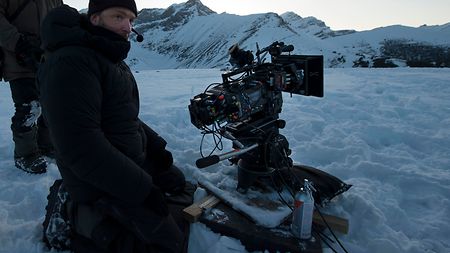With the ALEXA XT and ALEXA M as his main cameras, Lubezki was able to shoot at very low light levels and create the immersive, visceral experience Iñárritu envisaged. "We used very wide lenses that allowed us to show all the context, all the environment, at the same time as we can show emotion and be close to the actors. So the relationship between the environment and the actors is always present," the cinematographer explained in an interview with "ScreenDaily." Operating the ALEXA M handheld, Lubezki often walked alongside the actors, responding to their movements and conveying a heightened sense of their presence in the landscape.
Significant portions of the film were shot with ARRI Rental's ALEXA 65 large-format system, which was brand new and only just ready in time for the production. "We were lucky that ARRI was coming out with their new ALEXA 65," Lubezki told "Deadline." "The great thing about the camera is that it has much more resolution than any other digital camera. It truly captured what I was feeling when I was there into the screen, and that was kind of wonderful. The digital cameras allow us to shoot in this very dark environment, but also to shoot in a way that looks more naturalistic--without grain or anything between the audience and the character. So it's a little bit like a window into this world, and that's what I like about the digital camera. The camera didn't have any problem because digital cameras run warm, so they actually like the cold. But the monitor did freeze a couple of times, and cables froze, and the batteries would last a very short time compared to what they would last in other places. But it was not really a big issue with the gear. We had the best crew in the world, and they kept the gear running all the time."
